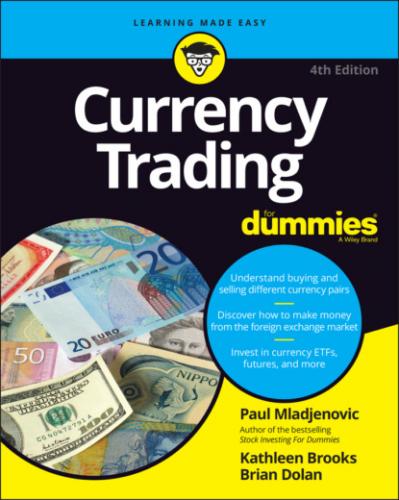Trading in the interbank market
The bulk of spot trading in the interbank market is transacted through electronic matching services, such as EBS and Reuters Dealing. Electronic matching services allow traders to enter their bids and offers into the market, hit bids (sell at the market), and pay offers (buy at the market). Price spreads vary by currency pair and change throughout the day depending on market interest and volatility.
The matching systems have prescreened credit limits, and a bank will only see prices available to it from approved counterparties. Pricing is anonymous before a deal, meaning you can’t tell which bank is offering or bidding, but the counterparties’ names are made known immediately after a deal goes through.
The rest of interbank trading is done through currency brokers, referred to as voice brokers to differentiate them from the electronic ones. Traders can place bids and offers with these brokers the same as they do with the electronic matching services. Prior to the electronic matching services, voice brokers were the primary market intermediaries between the banks.
Stepping onto a currency trading floor
Although trading rooms in the large banks have shrunk since the 2008–2009 financial crisis, interbank trading rooms can still be lively and are staffed by a variety of different market professionals, each of whom has a different role to play. The typical currency trading room has
Flow traders: Sometimes called execution traders, these are the market-makers, showing two-way prices at which to buy and sell, for the bank’s customers. If the customer makes a trade, the execution trader then has to cover the resulting deal in the interbank market, hopefully at a profit. These traders are also responsible for watching and executing customer orders in the market. These are the traders who are generating most of the electronic prices and price action.
Proprietary traders: These traders are focused on speculative trading for the bank’s own account. Their strategies can run the gamut from short-term day trading to longer-term macroeconomic bets. In the wake of the 2008–2009 financial crisis and changes to regulation such as the Volcker Rule, there has been a sharp decline in banks’ trading for their own accounts, and many proprietary trading desks have closed down or moved to hedge funds.
Forward traders: Forward traders are active in the forward currency market, which refers to trades made beyond the normal spot value date. The forward market is essentially an interest rate differential market, where the interest rates of the various currencies are traded. These traders provide the bank’s customers with pricing for non-spot deals or currency swap agreements. They also manage the bank’s interest rate exposure in the various currencies.
Options traders: Options traders manage the bank’s portfolio, or book, of outstanding currency options. They hedge the portfolio in the spot market, speculate for the bank’s own account with option strategies, and provide pricing to the bank’s customers on requested option strategies. (Flip to Chapter 15 for more about currency options.)
Sales staff: The sales staff acts as the intermediary between the trading desk and the bank’s customers. They advise the bank’s customers on market flow, as well as who’s buying and selling; recommend spot and option trading strategies; and execute trades between the bank and its customers.
Hedgers and Financial Investors
The forex market sits at the crossroads of global trade and international finance and investing. Whether it’s a U.S. conglomerate managing its foreign affiliates’ balance sheets or a German mutual fund launching an international stock fund, they all have to go through the forex market at some point.
The lion’s share of forex market turnover comes from speculators. Market estimates suggest that upwards of 90 percent of daily FX trading volume is based solely on speculation. We look at the types and roles of speculators later in this chapter, but here we want to introduce the players who are active in the forex markets for nonspeculative reasons.
Financial transactors are important to the forex market for several reasons:
Their transactions can be extremely sizeable, typically hundreds of million or billions.
Their deals are frequently one-time events.
They are generally not price sensitive or profit maximizing.
Hedging your bets
Hedgers come in all shapes and sizes, but don’t confuse them with hedge funds. (Despite the name, a hedge fund is typically 100 percent speculative in its investments.)
Hedging is about eliminating or reducing risk. In financial markets, hedging refers to a transaction designed to insure against an adverse price move in some underlying asset. In the forex market, hedgers are looking to insure themselves against an adverse price movement in a specific currency rate.
Hedging for international trade purposes
One of the more traditional reasons for hedging in the forex market is to facilitate international trade. Say you’re a widget maker in Germany and you just won a large order from a UK-based manufacturer to supply it with a large quantity of widgets. To make your bid more attractive, you agreed to be paid in British pounds (GBP).
But because your production cost base is denominated in euros (EUR), you face the exchange rate risk that GBP will weaken against the EUR. That would make the amount of GBP in the contract worth fewer EUR back home, reducing or even eliminating your profit margin on the deal. To insure, or hedge, against that possibility, you would seek to sell GBP against EUR in the forex market. If the pound weakened against the euro, the value of your market hedge would rise, compensating you for the lower value of the GBP you’ll receive. If the pound strengthens against the euro, your loss on the hedge is offset by gains in the currency conversions. (Each pound would be worth more euros.)
Trade hedgers follow a variety of hedging strategies and can utilize several different currency hedging instruments. Currency options can be used to eliminate downside currency risk and sometimes allow the hedger to participate in advantageous price movements. Currency forward
